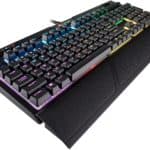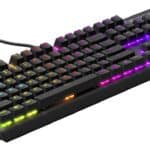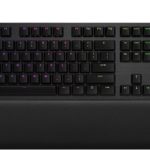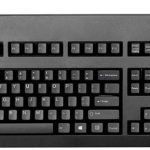Best Quiet Mechanical Keyboards in 2022
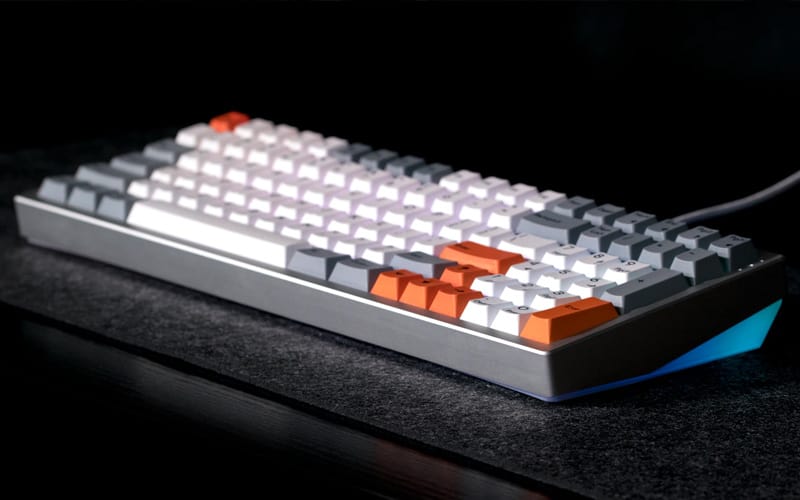
Mechanical keyboards have gone from niche peripherals favored by enclaves of retro conservationists, coders, typists, and subversive eSports pros to a ubiquitous part of the mainstream PC gaming scene. Nowadays, anyone serious about games jumps in armed with a mechanical keyboard. And quiet mechanical keyboards are easier on the ear.
Of course, mechanical keyboards offer tangible benefits over their non-mechanical counterparts. The tactile feedback and a satisfying audible click delivered by each keypress. And the speed and accuracy that comes hand-in-hand with knowing, free of even a shadow of a doubt, when each keypress has registered. Then there’s the variety of mechanical switches on offer that cater to different tactile preferences – and their ability to register far more simultaneous key presses than non-mechanical keyboards.
Another advantage of mechanical keyboards is their durability over non-mechanical keyboards. Non-mechanical boards stiffen and lose their springiness over time, and have a considerably shorter life span. In the context of the rapid, frequent key presses that define modern gaming, this means procuring a replacement once or twice a decade rather than every year or two.
However, for all the genuine performance advantages of mechanical keyboards, they are loud – obnoxiously so at times. From the audible tappity-tap that bleeds into your favorite streamer’s mic, to those choice words from housemates disturbed by the furious click-clack of, there are times when we’d love mechs to make less noise.
To that end, which are the best quiet mechanical keyboards out there we’d wonder? Except we’ve pulled together some recommendations that keep the noise down, without sacrificing any of the features that make mechanical keyboards the gamers’ peripheral of choice.
Products at a Glance
How we picked the Best Quiet Mechanical Keyboards
Given the remit of our guide, we favored mechanical keyboards that keep noise to a minimum. At this point, it’s worth noting that ‘quiet’ is relative and if you jump in expecting the same near-silent operation as membrane keyboards, prepare to be disappointed. Comparatively, even ostensibly ‘quiet’ mechanical keyboards invariably make an audible sound.
Aside from quiet operation, we also relied on the type and quality of the mechanical switches. Build quality and construction were used to evaluate each keyboard’s overall value and on-finger feel as well. Of course, we also factored in the price.
Features and considerations
Desirable-if-non-essential features such as palm rests, programmable keys, and macros were considered. As were welcome extras like media controls, responsive game-state/app RGB, and USB pass-through, and some of the more questionable benefits routed in aesthetics such as customizable backlighting. These are not imperative for the best quiet mechanical keyboard experience. But they’re nice.
Ultimately, we narrowed down our recommendations to four top picks. Read on to find a brief review of each, highlighting where they shine, alongside snappy pros and cons. Let’s jump in.
Best Quiet Mechanical Keyboards in 2022
- Cherry MX Silent switches
- Excellent gaming experience
- RGB backlighting
- Media controls USB pass-through
- Expensive
- Non-intuitive customization software
Corsair is known for making some of the best PC peripherals under the sun, and the Corsair Strafe RGB MK.2 is no exception. As the MK.2 naming convention implies, the keyboard is an updated version of the original Strafe keyboard with a few choice upgrades and a heftier price tag.
The Corsair Strafe RGB MK.2 employs Cherry MX Silent switches. They take all the responsive and smooth actuation of the gold standard Cherry Red switches but are designed to minimize operating noises by dampening the audible clicking synonymous with the Reds.
Cherry MX Silent switches feature a linear design and are up to 30% quieter than the company’s other switches. In practice, the audible noise is impressively low for a mechanical keyboard, and the tactile feel is smooth and precise.
The 100% anti-ghosting with full-key rollover works great to register every keypress regardless of how fast and how many keys you press simultaneously. Corsair even includes a set of textured and contoured keycaps for those that prefer a grippier feel from their keys.
While quiet keypresses are the main draw of the Corsair Strafe RGB MK.2 – a critical attribute for the best quiet mechanical keyboards – Corsair has thrown in a host of extra features. 8MB of onboard storage allows you to store up to three profiles that save customized lighting, macros, and shortcuts. A USB pass-through port mounted on the back near the cable can be used to hook up a mouse or other peripheral without clogging up a precious on-PC port.
The keyboard also features multimedia controls (play/pause, stop, forward, back) and a nifty volume roller on the keyboard’s brushed aluminum trim. There’s a detachable soft-touch palm rest for added comfort, too, which, when paired with the keyboard’s excellent key spacing, makes for a comfortable typing experience.
On the RGB front, the Corsair Strafe RGB MK.2 is well-served with per-key RGB backlighting, customizable via Corsair’s iCUE software. While serviceable, the software isn’t the most intuitive, with considerable menu hopping to do simple tasks.
- Sleek, compact design
- Fast, responsive linear switches
- RGB customization
- No extra niceties like multimedia controls or USB pass-through
- Poor typing experience
We questioned whether the SteelSeries Apex M750 deserved a spot on our quietest mechanical keyboard list because it is by far the loudest of our recommendations. However, the fast, tight, responsive feel, satisfying bounce back, and pleasant on-finger feel make the SteelSeries Apex M750 a top choice for serious gamers that are okay with a bit more noise in exchange for an experience specifically tuned to gaming.
That said, rest assured that by mechanical keyboard standards, the Apex M750 operating noise is below average.
The keyboard features Steelseries proprietary QX2 linear mechanical switches, roughly equivalent to the Cherry MX Reds, albeit quieter. As linear switches, they offer a low operating force, smooth, quick, consistent key presses, and little resistance.
In design terms, the SteelSeries Apex M750 sports an aluminum alloy chassis that feels both durable and sturdy. The looks are simple, plain even, but that isn’t necessarily bad, especially for those wary of showy, busy keyboards. The SteelSeries Apex M750 more than makes up for the lack of flair, with extensive customizable RGB backlighting bolstered by the versatile SteelSeries Engine software and Discord/game-state integration. As for extras, SteelSeries has foregone all the niceties, so no USB pass-through, media controls, or macros here.
For anything other than gaming, we’re hard-pressed to recommend the SteelSeries Apex M750. Typists and coders should look elsewhere. The minimal travel distance and actuation point, as well as the low resistance and twitchy feel, aren’t conducive to a pleasant sustained typing experience but are perfect for fast-fingered gamers.
- Romer-G linear switches
- Minimalist design
- Comfort + plush wrist rest
- No dedicated media controls
- Expensive
For those that favor the smooth, rapid keystrokes with little resistance of linear switches, we recommend the Logitech G513.
The keyboard utilizes Logitech proprietary Romer-G linear switches, loosely based on the Cherry MX in both form and feel, but with a more shallow actuation point. Keypresses are responsive and fluid, with very little operating force, and impressively quiet in the process. 26-key rollover and anti-ghosting help ensure every keypress registers regardless of how frantic the in-game action gets.
The Logitech G513 comes housed in a fairly barebones but attractive minimalist aluminum-magnesium alloy chassis. Attached is a durable detachable leatherette wrist rest packed with plush memory foam. Rests are generally an afterthought, but here we can’t heap enough praise on the G513. Even after long sessions, the keyboard remains supremely comfortable to use.
The Logitech G513 also features fully customizable Lightsync RGB backlighting, USB pass-through, full function keys with a toggle off game mode to avoid accidental keypresses (these also double as media controls), a 12 contoured keycap replacement set, programmable macros via Logitech G Hub. The RGB attributes are nothing short of impressive, with a wealth of presets, game-state integration, screen sampling, an audio visualizer, and per-key programming.
For those that prefer tactile switches, Logitech has an alternative version of the G513 equipped with Romer-G Tactile switches. They deliver that familiar discernible ‘bump’ feedback while keeping noise down. That model isn’t as quiet as the Romer-G linear, but sufficiently so to fall into the quiet mechanical keyboard category.
- Simple, retro design
- Ideal for productivity tasks
- Durable
- Cherry Switches
- No extra features
- Not the best looking keyboard
Pimped out gaming keyboards aren’t for everyone, and if you want to avoid funny looks from co-workers with a keyboard that blends into the office environment but still want quiet operation, then we’d recommend the unassuming but excellent Cherry G80-3000.
Heavily inspired by workhorse mechanical keyboards of old, you could call the Cherry G80-3000 retro if only for its simple, almost drab, looks and functional design. It’s heavy at nearly a kilogram. In the hands, it feels virtually indestructible, hinting at years of sustained use. You can expect 50 million key presses before the keyboard starts to falter.
With Cherry on manufacturing duties, you get excellent linear MX switches that are quiet, smooth, and responsive. Every keystroke feels precise and accidental presses are a rarity. The in-hand feel is precise, although it lacks the tactile feedback of non-linear switches. It’s the compromise you make for the comparatively lower operational noise produced by the Cherry G80-3000. As above, the noise is relative to other mechanical keyboards, so consider a membrane option if you want genuinely silent operation.
As for added extras, there are simply none. No USB pass-through, media controls, RGB backlighting, or macros. The Cherry G80-3000 shines for data-input, typists, and coders but falls short on the gaming front. So, one to avoid if you want all the RGB trimmings and showy ‘gamer’ looks.
One negative is that the Cherry G80-3000 is pricey for what it offers, and you’d get much more from a gaming keyboard for the same price. Still, it’s an amount of money you can justify for a premier typing experience if you’re a professional typist.
Mechanical Switches
There are three groups of switches – linear, tactile, and clicky. Linear switches offer a smoother and consistent up-down keypress with less audible and tactile feedback. Actuation occurs when the key is pressed down completely. Tactile switches deliver a satisfying physical ‘bump’ when the keypress registers at an actuation point roughly halfway into the key’s travel. As the name suggests, clicky provides an audible high-pitched click sound when pressed and is essentially a louder tactical switch.
Looking towards brand name switches, Cherry MX is by far the most popular. For convenience, Cherry has assigned a color to each switch type to highlight the pressure, feel, and audio feedback attributes of each. Other manufacturers such as Logitech and Razer also produce their own proprietary switches, which are more or less inspired by the Cherry MX family.
If you have a particular keyboard in mind, we’d strongly suggest determining what type of switch it uses, then conducting some research to check that the characteristics complement your keyboard style and the games you play most.
Size and Tenkeyless
Mechanical keyboards come in a range of sizes, a point well worth considering when buying.
The most common is the full-sized keyboard. This is your run-of-the-mill size with a ten-key number pad on the right. Next up, we have the tenkeyless keyboard, and as the name suggests, they don’t include the right-hand number pad. These are ideal for those that don’t generally use number and page-up style buttons all that much.
Finally, there are tenkeyless keyboards with a reduced footprint (both in width and length) and the function keys removed. The FN keys are often incorporated into other keys, ideal for those with small desks or who want a keyboard they can transport around easily.
The smaller options feature the same genuine mechanical switches and associated performance as large ones, so don’t worry about sacrificing quality for a more compact form factor.
Price and Features
It’s no secret that mechanical keyboards cost more than their membrane and chiclet counterparts. You are paying for a rugged design, long-lasting quality, and the performance advantages of those prized mechanical switches.
With so many options out there, manufacturers are competing for your money. As a consequence, prices are much more affordable than you’d expect, especially if you forego extra features and are happy with a no-frills keyboard that has genuine mechanical switches.
RGB light shows, macro keys, media, volume controls, and other additional features naturally command a premium, and it’s well worth asking yourself whether you genuinely need them or if they’ll end up being used sporadically before committing to a purchase.
Mechanical keyboard sales are a dime a dozen, and in any given week, we invariably see one or two mechs from the big-name manufacturers discounted on sites like Amazon. Keep an eye out for these price cuts if you fancy a feature-rich keyboard but are put off by the full retail price.
Which mechanical key is the quietest?
Linear keys. But less us explain. There’s a lot of talk about colors when it comes to mechanical keyboard switches. Why? Because each color has slightly different attributes.
Mechanical switches can be one of:
- Linear: quietest, smoothest, and consistent (Red, Yellow, Black)
- Tactile: noisier, less smooth, (Brown, Clear)
- Clicky: bumpy, loudest (Blue, Green).
Linear switches will be the smoothest and most consistent to use, and will also offer the least audible noise. So, the quietest mechanical keyboards should feature either red, yellow or black Switches. However, as they provide less tactile and audible feedback, they are generally not the best for beginners to get on with as a first mechanical keyboard.
What keyboards are the quietest?
Generally, the answer to this would be mechanical keyboards using linear switches, so either red, yellow, or black switches.
Our overall winner in this guide is the Corsair Strafe RGB MK.2, which uses Cherry MX Red switches. But we also like the linear (and so relatively quiet) Logitech G513.
Our Verdict
Our top recommendation is the Corsair Strafe RGB MK.2. The complete package, the Strafe RGB MK.2 delivers on all fronts with excellent Cherry MX Silent switches, a stellar gaming experience, vivid RGB backlighting, plenty of extra features, and quiet key presses. The price may be prohibitive for some, but there’s value for money here for those that want one of the best quiet mechanical keyboards out there.
For pure gaming performance, we recommend the SteelSeries Apex M750. With a sleek design, and a fast, responsive on-finger feel, this keyboard shines for fast-fingered, twitchy games.
The Logitech G513 is an equally worthy quiet mechanical keyboard that leverages Logitech’s proprietary Romer-G linear switches for a supremely comfortable and satisfying gaming and typing experience. A wealth of extras, sturdy construction, and excellent customization software further bolster the Logitech G513’s many attributes.
Moving away from gaming, we highly recommend the retro workhorse Cherry G80-3000 for professionals that want to keep operating noise to a minimum without sacrificing the benefits of a mechanical keyboard. Unassuming and modest, the Cherry G80-3000 foregoes bells and whistles for a durable, functional design intended for years of sustained use.
With that, we’ll bring our recommendations for the top quiet mechanical keyboards to an end. Naturally, there are countless other options out there, and in reality, we’ve only paddled in the large pool of quieter keyboards. Nevertheless, we hope the above recommendations prove helpful or at least offer some food for thought to aid your own hunt for the perfect keyboard. We love feedback, so don’t hesitate to get in touch via the comments section below with any recommendations or pressing questions/concerns about our top picks.


